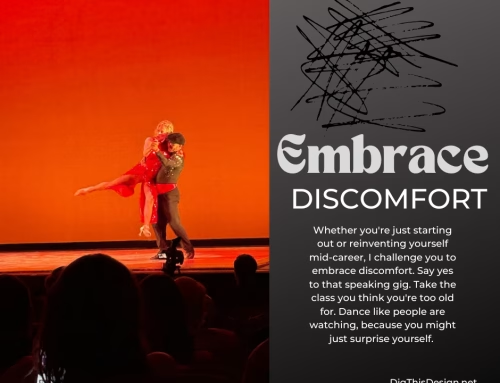In the dynamic realm of creative industries, the fusion of design ingenuity and precision engineering has given rise to a revolutionary force: CNC machining. As technology continues to advance, this sophisticated process has transcended its origins in the aerospace and automotive sectors to redefine the landscape of art, architecture, and product design.
This blog post delves into the captivating intersection where design meets precision, exploring the symbiotic relationship between creative visionaries and computer numerical control machining. CNC machining has transformed creative expression, from unleashing creative freedom to building architectural marvels. Join us as we uncover its transformative impact as this cutting-edge technology shapes design and innovation for years to come.
CNC Machining Has Revolutionized the Creative Industries
The Evolution of CNC Machining
The journey of CNC machining from its inception has been transformative. The CNC machining industry is expected to experience a growth trajectory, with market projections indicating an increase from $85.9 billion in 2023 to $127.0 billion by the year 2032. Initially conceived for aerospace and automotive applications, this innovative technology has transcended its origins and seamlessly infiltrated a myriad of creative domains.
What truly distinguishes CNC machining is its unparalleled capacity to seamlessly convert intricate digital designs into tangible objects, ensuring a level of precision that redefines the boundaries of what is achievable. This evolution underscores the versatility and adaptability of CNC machining, positioning it not only as a tool for precision engineering but also as a driving force propelling innovation across a spectrum of creative endeavors.
The Fusion of Design and Precision
Within the expansive realm of creative industries, where the seamless integration of aesthetics and functionality is imperative, achieving precision stands as a fundamental objective. At the forefront of this pursuit is CNC machining, serving as the crucial link between conceptualized designs and tangible reality.
Designers find themselves equipped with the unparalleled ability to explore the outer limits of creativity, propelled by the confidence that CNC machines possess the capability to meticulously replicate their intricate designs.
This harmonious synergy between design and precision not only empowers creative visionaries but also unveils a vast expanse of uncharted territories waiting to be explored by artists and designers alike. As these innovators navigate the intricate tapestry of creativity, the collaboration with reputable prototype companies further enhances the transformative potential of CNC machining in shaping the future of design.
Unleashing Creative Freedom
CNC machining liberates creative minds from the constraints of traditional manufacturing methods. Intricate patterns, complex geometries, and delicate details that were once challenging to achieve are now within reach. The precision of CNC machining allows artists to experiment with new forms and materials, giving rise to avant-garde creations that redefine artistic norms.
Architectural Marvels
In architecture, CNC machining has revolutionized the way structures are conceived and constructed. Intricate facades, complex truss systems, and innovative building components can be realized with unprecedented precision. Architects are no longer bound by the limitations of manual craftsmanship, enabling the creation of structures that push the boundaries of design and engineering.
Sculpting the Future of Art
CNC machining has become an indispensable tool for sculptors seeking to materialize their visions with unmatched precision. From traditional materials like stone and wood to contemporary mediums such as metal and composites, CNC machining allows artists to sculpt intricate forms and experiment with once unimaginable textures. The result is a fusion of artistic expression and technological prowess, leading to a new era of sculptural innovation.
Customization in Product Design
In the realm of product design, CNC machining facilitates the production of highly customized and intricate components. From consumer electronics to furniture, designers can create products that seamlessly blend form and function.
Mass customization has now become a reality, giving consumers the ability to personalize items according to their tastes and needs. Not only does this level of personalization enhance user experiences but it also sets new standards in both aesthetics and functionality for product designs.
Efficiency and Sustainability
Beyond creativity, CNC machining brings efficiency and sustainability to the forefront. The precision of CNC machines minimizes material wastage, optimizing the use of resources.
Not only can CNC machining make design and manufacturing more cost-effective, but it also meets the growing emphasis on sustainable practices in creative industries. Being capable of creating intricate designs while having minimal environmental impacts positions it as an invaluable asset in creating an environmentally friendly future for design and manufacturing.
Challenges and Future Prospects
While CNC machining has undoubtedly transformed creative industries, it is not without its challenges. The initial costs of acquiring and maintaining CNC machines can be prohibitive for smaller businesses and individual artists. Additionally, the reliance on digital technologies raises concerns about the potential loss of traditional craftsmanship skills.
As technology and accessibility advance, CNC is set to help meet these challenges head-on. When CNC becomes part of the creative process, its role as an extension of design and precision will only continue to expand and push back against what was once possible in art, architecture, and design.
Final Thoughts
In the dynamic landscape of creative industries, the fusion of design and precision through CNC machining marks a significant shift. From pushing the boundaries of artistic expression to redefining architectural possibilities, CNC machining has become a catalyst for innovation.
As technology continues to advance, the creative industries are poised to witness a renaissance, where the intersection of design and precision becomes the epicenter of transformative and awe-inspiring creations.





